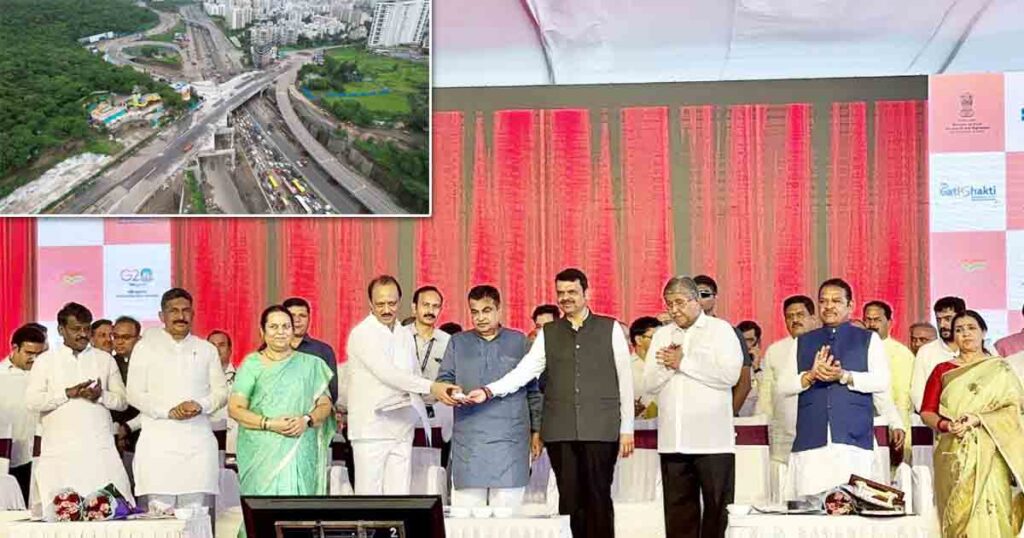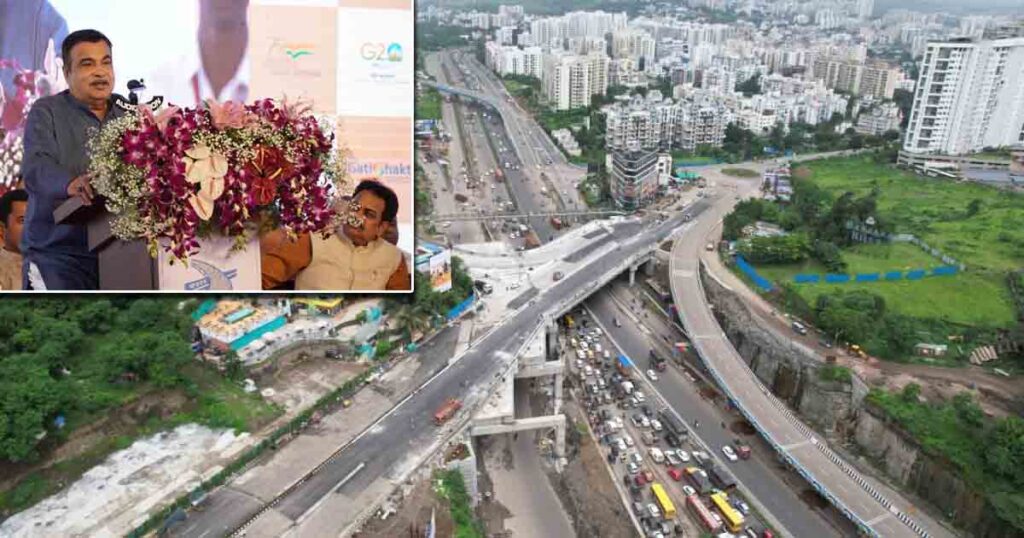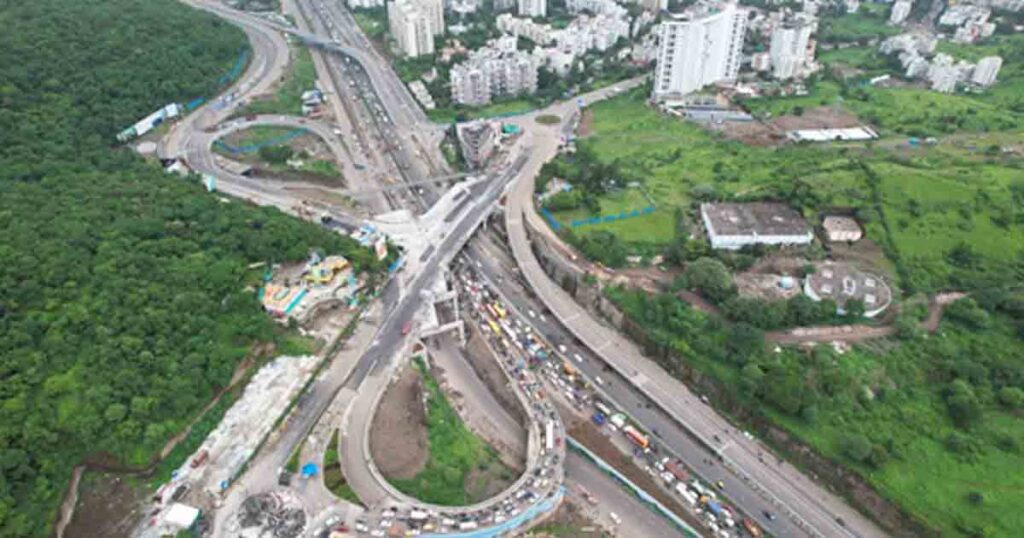Nitin Gadkari Launches Chandani Chowk Flyover, Proposes 50,000 Crore Bridge Plan To Ease Congestion

Union Road Transport and Highways Minister, Nitin Gadkari, has unveiled a visionary plan to combat traffic congestion in Pune through the construction of 50,000 crore rupees worth of bridges. These ambitious infrastructure projects, slated for both the Pune-Bangalore and Pune Sambhajinagar road sectors, are primed to alleviate the city’s traffic woes.
Speaking at the inauguration of an integrated infrastructure and road development project on National Highway No. 48 at Chandni Chowk, Gadkari outlined his commitment to enhance Pune’s transportation network. The event, attended by Deputy Chief Ministers Devendra Fadnavis and Ajit Pawar, showcased a united front to address Pune’s burgeoning traffic challenges.

Gadkari affirmed that Pune’s prominence is on an upward trajectory, emerging as a pivotal hub of national development. Notably, he praised Pune’s remarkable growth, emphasizing its pivotal role in generating employment opportunities. Recognizing the city’s significance, he underscored the importance of round-the-clock access to water and well-maintained roads for Pune’s continued advancement. Acknowledging the government’s support for Pune’s development, Gadkari confirmed forthcoming discussions with the Chief Minister to deliberate on various projects aimed at bolstering the city’s infrastructure.
A slew of transformative projects is already on the horizon. Among them, plans for a two-story double-decker bridge on the Pune-Satara highway, the expansion of Hadapsar-Yawat Unnat road, a comprehensive upgrade of the Pune-Shirur-Ahmadnagar 56 km road, and the rejuvenation of the Talegaon-Shikrapur-Chakan 54 km road and Nashik Phata to Khed road. A whopping 2 lakh crore rupees worth of projects have been earmarked for Pune division, some of which have already come to fruition. Additionally, Gadkari revealed that the Sant Dnyaneshwar Maharaj and Sant Tukaram Maharaj Palkhi Marg, valued at 12 thousand crore rupees, are on track for completion by year-end.

Gadkari also addressed Pune’s environmental concerns, highlighting the use of modern technology in the Chandni Chowk project to mitigate pollution. He advocated for the exploration of air buses as an alternative mode of transport, coupled with the issuance of licenses for electric and ethanol-powered rickshaws. In line with the global shift towards sustainable energy, he proposed the generation of green hydrogen from municipal waste. By channeling segregated garbage into the development of the Pune Ring Road, Gadkari posited a viable solution to the city’s waste management challenges. Furthermore, he advocated for purified water from Pune to be utilized in industries, agriculture, and railways, thus curbing water pollution.
Pune’s transport evolution is further bolstered by the Nagarotthaan Yojana, which expedites land acquisition for road projects in cities such as Solapur, Pune, and Nashik. The Chandni Chowk project bears testimony to the efficacy of this approach. Gadkari commended the collaborative efforts of the Divisional Commissioner, Collector, and the National Highways Authority of India for their commendable contributions.
Meanwhile, Deputy Chief Minister Devendra Fadnavis highlighted the urgency of an integrated transport system to harness Pune’s growing passenger numbers, particularly fueled by the second phase of the Pune Metro. The ‘Pune One Card,’ initially introduced by Pune Metro, could potentially be integrated with PMPML, offering a versatile transport option applicable not just in Pune but across the nation. Fadnavis envisioned an integrated transport network within a 500-meter radius, encouraging public transport utilization. The creation of a smart system would furnish commuters with real-time information on bus schedules, locations, and passenger counts, further optimizing the travel experience.
Deputy Chief Minister Ajit Pawar echoed the sentiments of collective action, emphasizing the need to accelerate the metro work in Pune and Pimpri Chinchwad. A strategic collaboration between the central government, the state, and citizens is poised to rejuvenate Pune’s infrastructure, with bridges and flyovers earmarked for key traffic corridors. Recognizing Pune’s growth as an industrial epicenter, Pawar urged comprehensive enhancements across roads, metro, and air transport to ensure efficiency. With a shared vision, the central government’s commitment, and the active participation of citizens, Pune’s transformation into an integrated, sustainable, and well-connected city is on the horizon.









